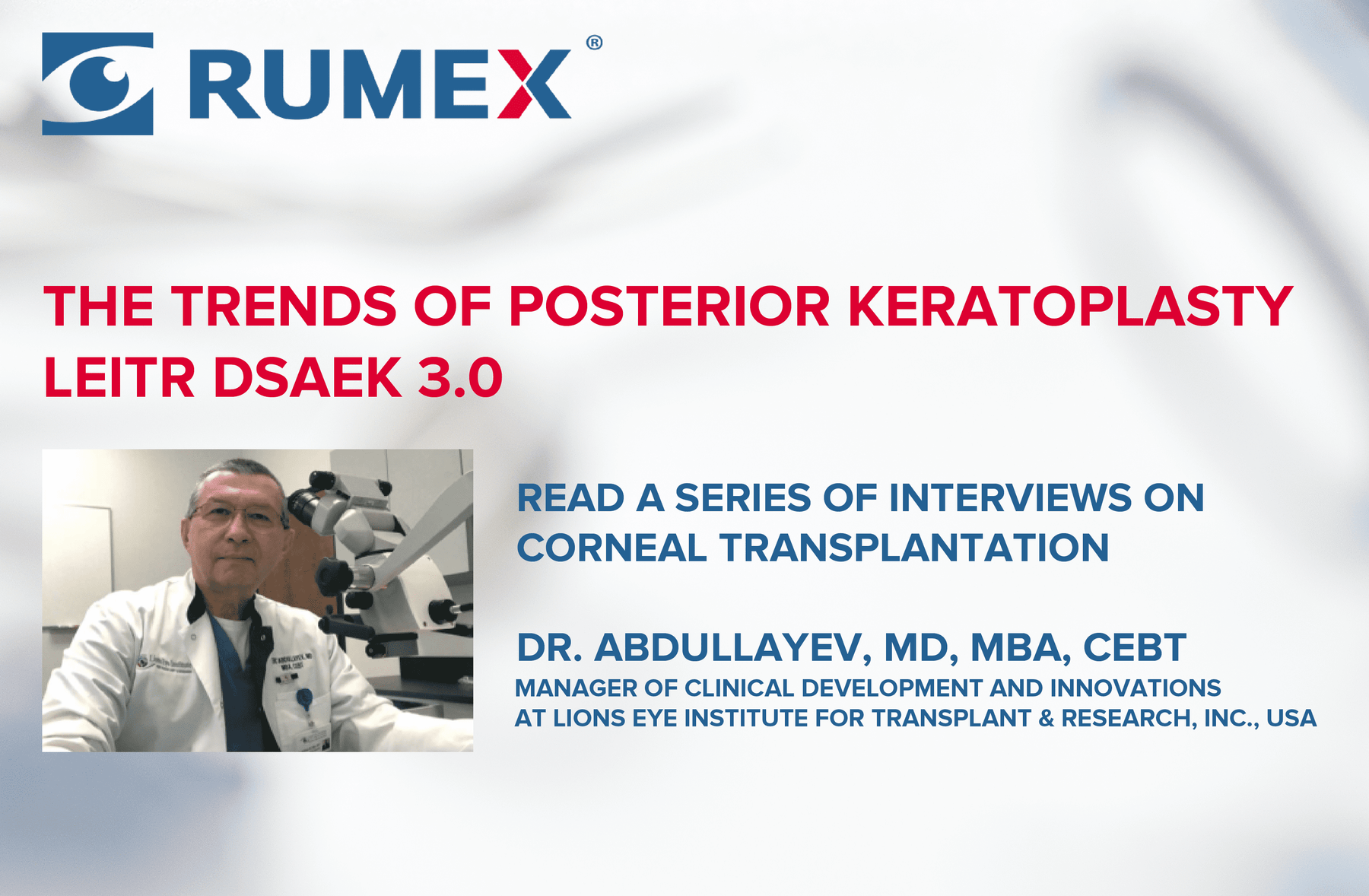
New trends in implantation of DSAEK grafts in the USA.
We continue conversation with Dr. Abdullayev, MD, MBA, CEBT, Manager of Clinical Development and Innovations at Lions Eye Institute for Transplant & Research, Inc., USA.
This column will be dedicated to graft management.
- Dr. Abdullayev, please share the trends in the implantation of DSAEK grafts in the USA
There are several trends and the main is to decrease the graft thickness and make DSAEK procedure less invasive (decrease an insertion wound size). I am proud that we are leaders, and I personally pioneered developing DSAEK graft thinning and less invasive insertion techniques. To compare, the average thickness of DMEK grafts is only 10 microns. In case of DSAEK grafts, the stroma plays a role of a carrier of Descemet’s membrane with endothelial cells but makes graft thicker. In 2006, when we started DSAEK, its thickness was 170 microns and thicker. In 2012, I introduced one of the first techniques to prepare DSAEK grafts with thickness 100 microns and thinner. In 2014 I introduced the first technique to prepare DSAEK grafts with thickness 40-60 microns which became clinically advanced (same visual recovery as after DMEK) compared to DSAEK grafts with thickness 100 microns and thicker. Since 2006 multiple DSAEK grafts delivery instruments were developed -forceps, Busin glide, EndoSerter, Endoglide which required delivery of the graft by touch, large (4-5mm) incision, anterior chamber maintainer, multiple closing sutures and had other disadvantages. These listed disadvantages are eliminated with introduction of our LEITR DSAEK 3.0.
- Please advise forceps to hold such a thin graft.
Many forceps that are available on the market have 150 microns distance between the branches and were designed for DSAEK grafts with thickness 100 microns and thicker; when thin(less than 100 microns) the graft often slides off the jaws of such forceps. This problem is widespread, so recently we designed and together with Rumex International have manufactured special forceps for graft holding with 120 microns distance between the branches.
It’s Lambright-Abdullayev Ultrathin DSAEK Donor Grasping Forceps, 4-254S, which allows to safely grasp DSAEK grafts with thickness 70 microns and thinner. A wave-shaped serration of grasping platforms allows for non-slip insertion and minimizes the risk of tissue adherence when the forceps is removed.
